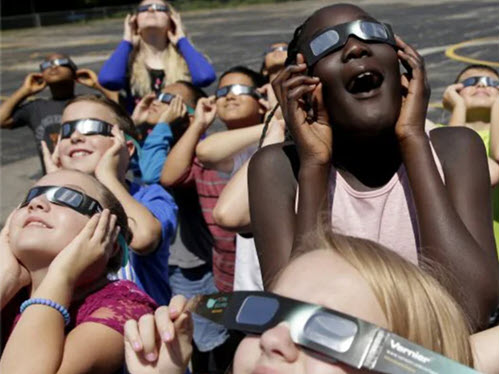BEAVERTON, Oregon — Vernier Science Education recently launched new resources to help science and STEM educators leverage the two upcoming eclipses—the “Ring of Fire” annular eclipse on October 14, 2023 and the total solar eclipse on April 8, 2024—to create engaging learning experiences for students. In addition to sharing tips and best practices for collecting data during the celestial events, the company is offering certified eclipse viewing glasses so educators and students alike can safely observe the eclipses taking place.
“The eclipses provide a perfect—and rare—opportunity for educators to teach students of all ages about real-world, scientific concepts related to light, temperature, electromagnetic radiation, and more,” said David Vernier, Co-Founder of Vernier Science Education. “During the eclipses, educators and students can use our glasses to observe the moon pass between the sun and earth, and they can use our technology to collect data and better understand what is happening in the world around them.”
The CE-certified eclipse viewing glasses can be purchased in class packs of 50 glasses (EC-GL50) on the Vernier website for $25.
Vernier Science Education is offering an array of helpful tips on how to collect data during the eclipse. This includes information on how to use applicable sensors, such as the wireless Go Direct® Light and Color Sensor, Go Direct Weather System, Go Direct PAR (Photosynthetically Active Radiation) Sensor, Go Direct Pyranometer, and Go Direct Surface Temperature Sensor, as well as a number of wired sensors designed specifically for the LabQuest® interface.
Educators are encouraged to share data and pictures from their eclipse experiences on social media using the hashtag #VernierEclipse.
Educators can also access a compilation of reference materials about the eclipse from respected organizations such as NSTA and NASA, as well as safety recommendations and more on the Vernier Science Education website.
To learn more about eclipse resources from Vernier Science Education, visit https://www.vernier.com/eclipse.
About Vernier Science Education
For more than 40 years, Vernier Science Education has been committed to using our experience, knowledge, and passion to create the best and most reliable solutions for STEM education. Our comprehensive solutions include hardware, software, content, assessment, professional development, and technical support. At the heart of Vernier is our deep commitment to being an authentic and trusted partner to STEM educators. We are dedicated to partnering with educators and communities to build a STEM-literate society where students grow up to become knowledgeable citizens who can solve problems, fully contribute to their communities, and drive innovation. For more information, visit www.vernier.com.

